As Windows 11 rolls out, many users are keen to find out if their current PCs are eligible for the upgrade. Compatibility depends on specific hardware requirements set by Microsoft. This guide will walk you through several methods to check if your PC can run Windows 11.
Use Microsoft's PC Health Check App to Test Windows 11 Compatibility
Microsoft's official tool, the PC Health Check app, is designed to help users determine if their systems meet the Windows 11 requirements. Here's how to use it:
- Download the PC Health Check app from the official Windows 11 page.
- Run the installer by double-clicking the downloaded file.

- Accept the license agreement by checking the
I accept the terms in the License Agreementbox, then clickInstall.
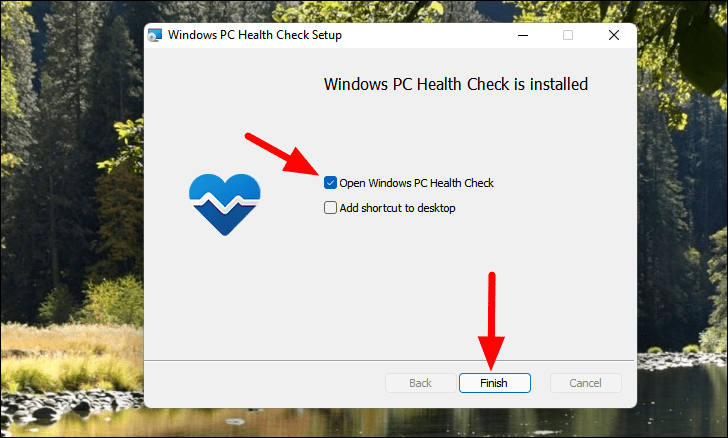
- Once installation is complete, ensure the
Open Windows PC Health Checkoption is selected, then clickFinish.

- In the PC Health Check app, click on
Check nowto assess your PC's compatibility.
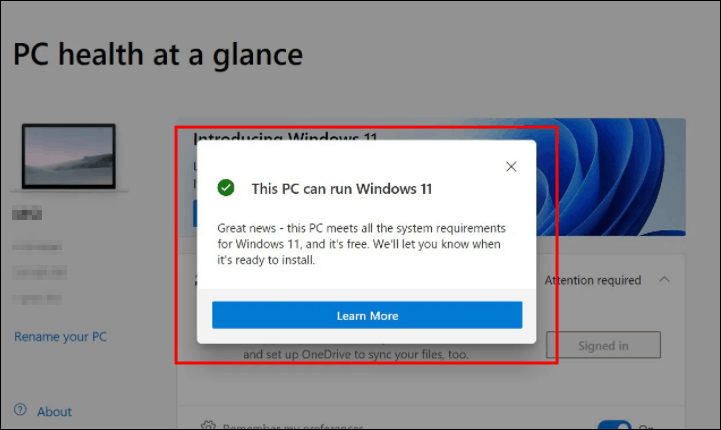
After the scan, you'll receive one of two messages:
'This PC can run Windows 11': Congratulations! Your system meets all the requirements for Windows 11.
'This PC can't run Windows 11': If you see this message, don't worry. There are steps you can take to address common issues.

'This PC can't run Windows 11' – What to Do Next
If your PC doesn't meet the requirements, the first step is to check if Secure Boot and TPM 2.0 are enabled. These features are essential for Windows 11 and are often disabled by default.
Even after enabling Secure Boot and TPM, if your PC still isn't compatible, it might be due to an unsupported processor. Windows 11 requires newer CPUs, such as 8th generation Intel processors or newer. You can consult the list of supported processors to verify if yours is compatible.
Check Windows 11 Compatibility Using 'WhyNotWin11'
If you need a more detailed compatibility check, the open-source tool WhyNotWin11 provides in-depth information about your system's readiness for Windows 11.
- Visit the WhyNotWin11 GitHub page.
- Scroll down and click on
Download latest stable releaseto get the application.

- Run the downloaded file. The application will scan your system and display compatibility results for various components.
The results are color-coded:
- Green: Compatible components.
- Orange: Components that are borderline or require attention.
- Red: Incompatible components.

Hover over the information icons next to each criterion for additional details.
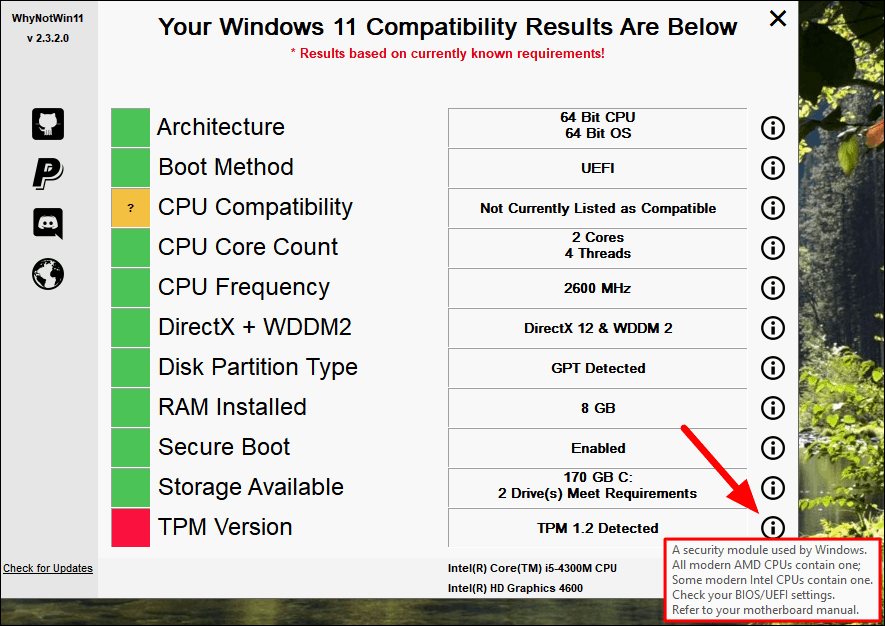
WhyNotWin11 provides a comprehensive overview, helping you pinpoint exactly where compatibility issues may lie.
Use 'Win11SysCheck' Tool
Another alternative is the Win11SysCheck tool, which is also open-source and available on GitHub. This tool runs a command-line interface to check your system's compatibility.
- Go to the Win11SysCheck release page.
- Click on
Win11SysCheck.exeunder the assets section to download the tool.
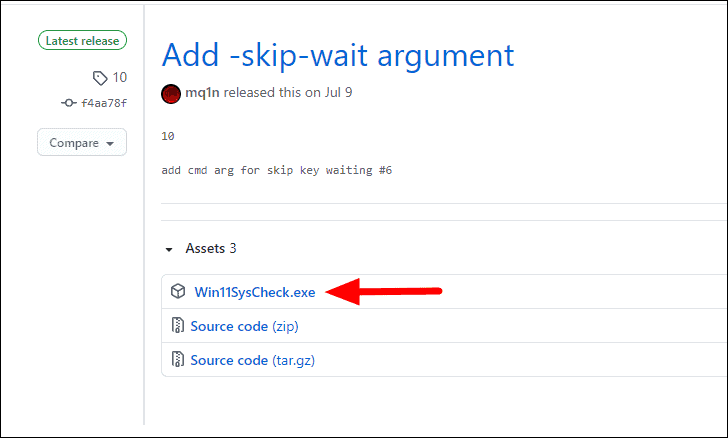
- If you encounter a security warning, click on
More infoand then selectRun anyway.
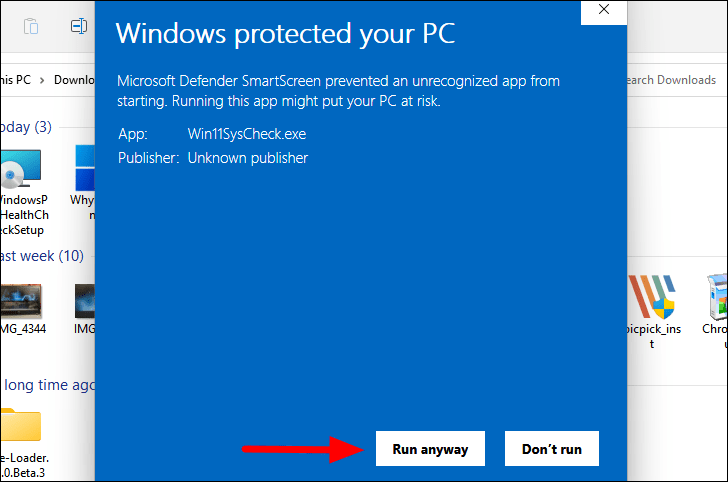
- A command prompt window will open and display the compatibility check results for your system.
If all requirements are met, you'll see a success message at the end. If not, the tool will indicate which components fail to meet the criteria.
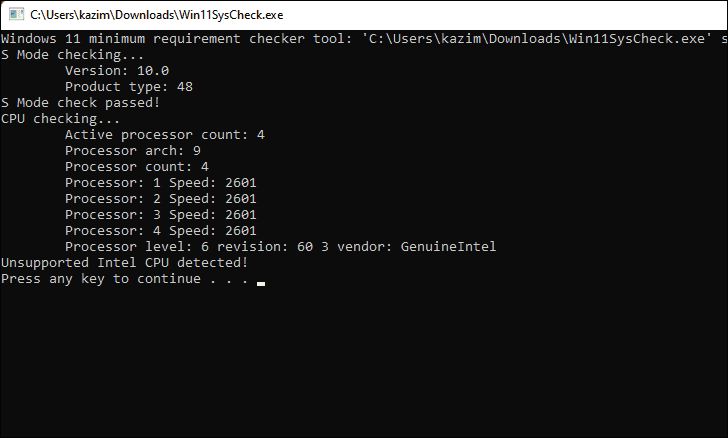
Windows 11 System Requirements
Understanding the specific hardware and software requirements can help you assess compatibility manually. Below are the minimum system requirements for Windows 11:
| Processor | 1 gigahertz (GHz) or faster with 2 or more cores on a compatible 64-bit processor or System on a Chip (SoC) |
| Memory | 4 GB RAM or more |
| Storage | 64 GB or larger storage device |
| System Firmware | UEFI, Secure Boot capable |
| TPM | Trusted Platform Module (TPM) version 2.0 |
| Graphics Card | DirectX 12 compatible graphics / WDDM 2.x |
| Display | Greater than 9” diagonally with HD Resolution (720p) |
| Internet Connection | Microsoft account and internet connectivity required for setup |
By following these methods, you can easily determine if your PC is ready for Windows 11. If your system doesn't meet the requirements, you may need to upgrade certain hardware components or continue using your current version of Windows.










Member discussion